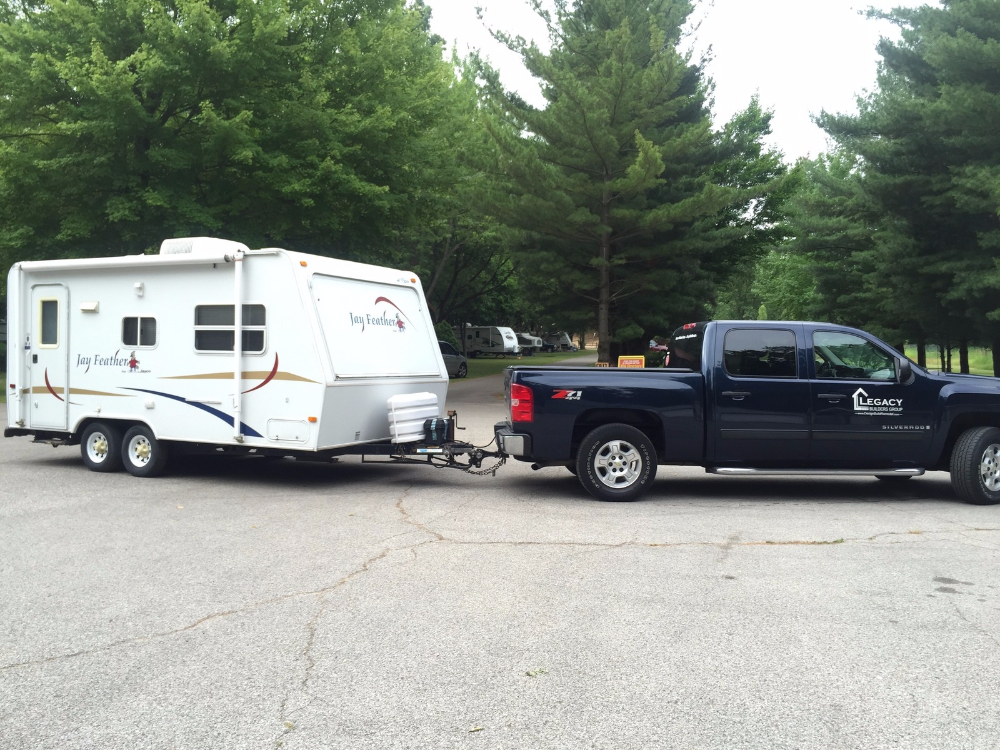I Don’t Know Much About Tires
By Bill Haussler

This past June my wife and I hooked up our travel trailer and headed north to enjoy beautiful Lake Michigan. Much to our chagrin, we blew out a tire on the trailer along the way. We put on the spare tire and tried to find a tire store but it was a Sunday and the only place open was Walmart. We purchased the one tire they had that we could use as a spare and headed to our destination.
We enjoyed a week of vacation and the beautiful sights in southwest Michigan, the water, lighthouses, harbors, sailing and wineries. But we still had one problem hanging over our head: we needed to replace all of the tires on the trailer before we headed home. I called around to various tire companies trying to find a tire that fit and contacted a few friends to get their opinions on the best tire and what has worked for them. I got several different pieces of advice and had to try to discern what was best for my situation. One tire dealer tried to sell me tires that were smaller and stated my tires are no longer made. One had the right size but in a brand that I was advised not to purchase. I finally found a trustworthy tire company that had the right sized tires, a good brand, and the salesman empathized with my situation and offered terrific advice, knowledge and ultimately great service.
As we were making our trip back home on our new tires, it dawned on me how ignorant I am of trailer tires: how they are made, who makes good ones, and the importance of the specifications for trailer tires. It made me think about my clients and anyone who may be planning to do a home remodeling project or home addition and how they must feel and the questions they must have as most are like me and trailer tires – unfamiliar. Where do I start? How do I get design completed? What’s the best way to establish a budget? Who may be the right company for the job?
The truth is I could write a lengthy article about each of these questions. But today I would like to share some industry knowledge with you about design and budgeting, a subject that I am very passionate about. In some ways, I feel like our industry does a disservice to homeowners when it comes to design. Over the years, there has been very little attempt to educate the public about the best approach to design and budgeting. What little information is out there seems to be always missing a key component.
I like to think of it as a three-legged stool. The best approach to developing a good design and a realistic budget is to form a team of three: you the homeowner, the designer and the contractor. In most cases, if you leave any of these legs out of the process, you’ll find yourself very frustrated and aggravated. We often sit with clients who bring forth a set of really nice plans that were developed with the help of an architect or designer. The plans are generally awesome and the owner tends to be really attached to them. But the problem we run into, more often than not, is that to truly build out the new design, the cost is much higher than the budget the homeowner had in mind. Thus, they either have to start the process over or choose not to move forward with the project – which leads to a loss of the money invested in the design and, understandably, major frustration.
This is not to place blame on the independent designer or contractor, as they are obviously a valuable member of the team. On the contrary, it’s an illustration of what happens when one leg of the stool (the contractor) is left out.
One really sound three-legged stool could be referred to as Design-Build. Design-Build is an approach where the project’s design and construction are contracted and executed from a single source. With that combination, the design-build firm’s expertise in project management and the creativity and skill of the architects and designers, this approach provides many advantages to you as a homeowner.
The Design-Build Institute of America (DBIA) has identified a number of advantages to design-build over traditional design-bid-build: “This simple but fundamental difference saves money and time by transforming the relationship between designers and builders into an alliance which fosters collaboration and teamwork.”
- Single Source of Responsibility: With a single source of responsibility for every aspect of a project, our clients only have to hold one company accountable. No questions and no finger pointing. With the collaborative team of architect, designers, builder and owner, we can assure your project goals are met.
- Trust: Trust and rapport are built between the owner and builder from the onset of the process.
- Reduce uncertainty: The project design and budget are developed simultaneously to reduce risk and uncertainty.
- Trade Walk-Throughs: Trade walk-throughs help to define the scope of work and uncover existing conditions that affect the design and overall cost of the project.
- Save Time: A collaborative team approach will significantly reduce the amount of time from concept to completion and reduce redesign and rework.
- Save Money: This process uncovers key cost and provides the best priced solutions for your remodel.
If you are not certain or don’t see the value of a design-build approach and choose to hire your own designer or architect, do yourself a huge favor and get a contractor involved early in the process. Partner with a contractor you can trust and he can be an asset to developing the design and the budget for the project as you go along.
So this process might just be a bit more complex than purchasing some new tires for your trailer, but the point is the same. When trying to make financial decisions when in unfamiliar territory, it’s best to consult with a trustworthy, experienced and knowledgeable source like my friendly Goodyear Tire salesman in southwest Michigan.

